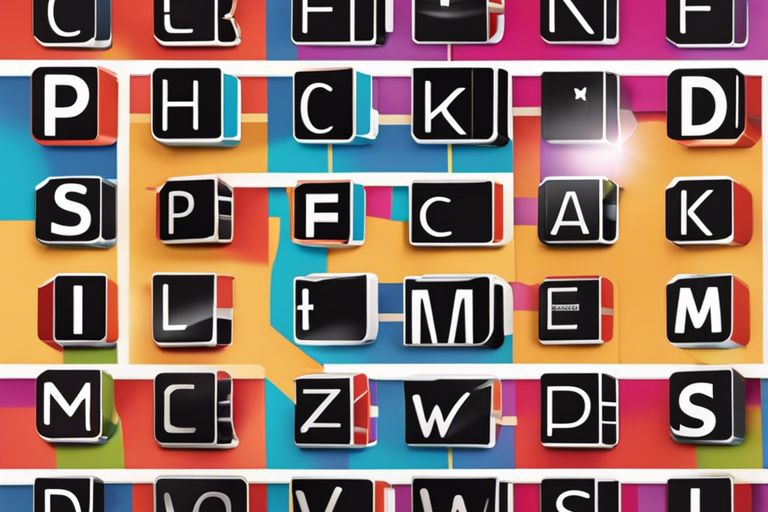Reading enthusiasts have long been embroiled in the age-old battle between phonics-based instruction and whole language philosophy when it comes to teaching young minds the art of reading. As the conflict continues to spark debate and divide opinions, it becomes crucial to explore deeper into the strategies and approaches behind these two contrasting methods. From decoding words through phonetics to recognising language as a complete system, the battle lines are drawn. So, which approach will emerge victorious in the quest to foster literacy in budding readers? Let’s unravel the complexities and nuances of phonics versus whole language instruction to uncover the path that leads to reading success.
Key Takeaways:
- Phonics-Based Reading Instruction: Involves teaching children spelling rules and phonetics to decode words based on their spellings, breaking written language into simple components.
- Whole Language Reading Instruction: Focuses on recognising words as whole pieces of language, emphasising meaning-making and context over decoding individual letters.
- Hybrid Approach: Many teachers use “embedded phonics” within whole language instruction, incorporating letter-sound relationships while focusing on memorising sight words for fluency.
The Ultimate Showdown: Phonics vs. Whole Language – Which Will Triumph in Teaching Reading?
Defining Phonics and Its Purpose in Reading
One of the fundamental approaches to teaching reading is through phonics, which focuses on the relationship between sounds and the letters that represent them. Phonics instruction aims to help children decode and spell words by understanding the sounds associated with individual letters and letter combinations.
The Science Behind Phonics: Phonological Awareness and Decoding
Understanding phonics involves developing phonological awareness, which is the ability to identify and manipulate individual sounds in words. Through phonics, children learn to decode words by applying this knowledge of letter-sound correspondence.
Instructional Strategies in Phonics-Based Programs
Phonological awareness activities, phonics games, and explicit instruction in sound-letter relationships are common strategies used in phonics-based programs to help children develop strong literacy skills.
The Efficacy of Phonics: Review of Educational Research
Decoding words through phonics instruction has been supported by educational research, which has shown that explicit phonics teaching can be effective in improving reading fluency and comprehension among young learners.
Addressing Criticisms: Limitations and Misconceptions of Phonics
Efficacy studies have countered criticisms that phonics instruction is overly focused on memorization or lacks real-world application. Research has shown that a balanced phonics approach, combined with other literacy strategies, can lead to successful reading outcomes for children.
Exploring Whole Language
The Philosophy of Whole Language Approach
Your approach to teaching reading is fundamentally different when adopting the whole language philosophy. Rather than breaking language down into letters and sounds, whole language emphasises the integration of language systems to make meaning. This approach believes in the holistic understanding of language, rather than focusing solely on decoding words.
Contextual Learning and the Emphasis on Comprehension
On the other hand, contextual learning plays a key role in whole language instruction, with a significant emphasis on comprehension. This method encourages students to understand words in the context of a sentence or passage, aiming to enhance their overall understanding of text rather than just focusing on word recognition.
This approach allows for a more natural progression of reading skills, as students are exposed to a variety of texts that provide context for learning new words and concepts. By engaging with literature in this way, students develop a deeper understanding of language and improve their overall comprehension skills.
Teaching Techniques Adopted in Whole Language Classrooms
For teachers in whole language classrooms, the focus is on creating a rich literacy environment that fosters a love for reading and writing. Students are encouraged to engage with a variety of texts, both fiction and non-fiction, to develop their reading and writing skills organically.
Approach The whole language method promotes student-centred learning, allowing students to explore their interests and passions through literature. By providing meaningful and engaging texts, teachers can inspire a lifelong love of reading and writing in their students.
Success Stories and Endorsements of the Whole Language Method
Language The success of whole language instruction is evident in the stories of students who have flourished in literacy skills through this approach. Educators and parents alike have endorsed the whole language method for its emphasis on understanding and enjoyment of reading.
Learning By focusing on comprehension, fluency, and a love of reading, whole language has produced successful readers who not only decode words but also understand and appreciate the power of language.
The Shortcomings of Whole Language: A Critical Analysis
One One criticism of the whole language approach is its tendency to overlook the importance of phonics instruction in developing foundational reading skills. While whole language champions context and comprehension, critics argue that a lack of emphasis on phonics can hinder a child’s ability to decode unfamiliar words efficiently.
Analysis It is necessary to strike a balance between whole language and phonics instruction to provide students with a comprehensive approach to reading and literacy development. By addressing the shortcomings of each method, educators can tailor their teaching practices to meet the diverse needs of their students.
Key Differences Between Phonics and Whole Language
Pedagogical Foundations and Teaching Philosophy
Differences: Phonics-based reading instruction focuses on decoding words by teaching spelling rules and phonetics, breaking language down into components. In contrast, whole language instruction emphasises recognising words as complete pieces of language within context, advocating for a holistic approach to reading.
Comparative Analysis of Learning Outcomes
Any discussion on the effectiveness of phonics versus whole language in teaching reading must consider the comparative analysis of learning outcomes. Below is a table showcasing key differences:
| Phonics | Whole Language |
|---|---|
| Emphasises decoding and phonetic rules | Focuses on holistic word recognition |
In considering these outcomes, it becomes evident that each approach has its strengths and weaknesses when it comes to teaching young readers how to decode and comprehend written language.
The Debate on Reading Fluency and Comprehension
Language: The debate surrounding reading fluency and comprehension in the context of phonics and whole language instruction is multifaceted and complex. While phonics proponents argue that explicit instruction in phonetic rules enhances reading fluency, whole language advocates believe that focusing on whole words within context promotes comprehension and enjoyment of reading.
The Role of Teacher Expertise and Classroom Environment
Analysis indicates that the role of teacher expertise and the classroom environment play a crucial role in the effectiveness of both phonics and whole language instruction. Teachers who are well-versed in both approaches can utilise a hybrid method to cater to the individual needs and learning styles of their students, creating a more inclusive and comprehensive educational experience.
Pedagogical research and empirical evidence have shown that a balanced approach to reading instruction, incorporating elements of both phonics and whole language, can lead to improved literacy outcomes for young readers.
Bridging the Gap: Balanced Literacy
The Genesis of Balanced Literacy
Despite the longstanding debate between phonics and whole language instruction, the concept of balanced literacy emerged as a middle ground approach. On one hand, phonics provides foundational knowledge of letter-sound relationships, while whole language emphasises holistic comprehension and contextual understanding of language.
Integrating Phonics and Whole Language: A Synergistic Approach
Literacy experts advocate for a synergistic approach in balanced literacy, where phonics and whole language are integrated seamlessly. With a focus on both decoding skills and comprehension strategies, this approach aims to provide students with a well-rounded reading experience that combines the strengths of both methodologies.
Case Examples: Balanced Literacy in Action
Literacy educators showcase case examples of balanced literacy in action, demonstrating how the integrated approach benefits students of diverse learning styles and backgrounds. By incorporating elements of phonics and whole language within a cohesive framework, educators are able to meet the varied needs of their students effectively.
Measuring the Success of Balanced Literacy in Diverse Settings
An vital aspect of implementing balanced literacy is evaluating its effectiveness in diverse educational settings. Through rigorous assessment methods and ongoing data analysis, educators can measure the impact of balanced literacy on student outcomes and make informed decisions for continuous improvement.
Phonics vs. Whole Language: The Policy Perspective
National and International Reading Initiatives
Whole language, as a philosophy of teaching reading, has been influential in shaping national and international reading initiatives. However, in recent years, there has been a shift towards a more balanced approach that incorporates elements of phonics instruction. Research has shown the effectiveness of phonics-based reading instruction in improving reading fluency and comprehension.
Influence of Policy on Classroom Practice
Policies regarding reading instruction have a direct impact on classroom practice. In many regions, there has been a move towards incorporating phonics instruction into the curriculum alongside whole language approaches. This shift reflects the recognition of the importance of phonics in developing strong literacy skills in young readers.
Navigating Standardized Testing and Curriculum Standards
Reading instruction in schools is often influenced by standardized testing and curriculum standards. Educators must navigate these requirements while still providing effective reading instruction. A balanced approach that integrates phonics and whole language strategies can help students meet these standards while developing strong reading skills.
Expert Opinions and Educational Insights
Voices from the Field: What Educators Say
Field experts in education offer valuable insights on the ongoing debate between phonics and whole language instruction. Research indicates that explicit phonics instruction, which teaches children spelling rules and phonetic decoding, can be effective in improving reading fluency. On the other hand, the whole language approach, which focuses on recognising words as complete units of language, has its supporters. Understanding the perspectives of educators in the field can help parents and teachers make informed decisions about how best to teach reading.
Linguists and Reading Specialists on the Front Lines
To gain deeper insights into the phonics vs. whole language debate, it is vital to seek the expertise of linguists and reading specialists. These professionals play a crucial role in shaping reading instruction methods and curricula. Drawing upon their knowledge of language acquisition and literacy development, linguists and reading specialists provide valuable perspectives on the effectiveness of different teaching approaches.
This chapter aims to explore into the viewpoints of experts in the field to shed light on the ongoing debate between phonics and whole language instruction. By understanding the perspectives of linguists and reading specialists, we can gain a deeper insight into the complexities of teaching reading and explore potential areas of convergence between the two approaches.
Ideological Divides and the Quest for Common Ground
Reading instruction has long been a topic of debate, with proponents of phonics and whole language holding differing ideological views on how best to teach children to read. While phonics emphasises decoding skills through letter-sound relationships, whole language focuses on whole-word recognition within a contextual framework. Educators face the challenge of navigating these ideological divides while seeking common ground to ensure effective literacy instruction for all students.
Technological Advances in Reading Instruction
Digital Tools and the Phonics-Whole Language Debate
Technological advancements have revolutionised reading instruction, offering a new perspective to the age-old phonics vs. whole language debate. Digital tools provide interactive methods that cater to individual student needs, allowing for personalised learning experiences. While some tools focus on phonics-based instruction, others support the whole-language approach, creating a well-rounded approach to reading education.
Software Programs and Apps: Complementing Traditional Methods
One significant aspect of technological advancements in reading instruction is the development of software programs and apps that complement traditional teaching methods. These tools offer engaging activities that reinforce phonics rules and whole language strategies. By incorporating interactive games and exercises, students can practice reading skills in a fun and stimulating way, enhancing comprehension and fluency.
Understanding the importance of integrating technology into reading education is vital for preparing students for success in the digital age. With the right tools and programs, teachers can create dynamic and immersive learning experiences that cater to diverse learning styles and abilities, ultimately improving overall literacy outcomes.
The Future of Reading Education in the Digital Age
One key aspect to consider in the future of reading education in the digital age is the continued development and integration of innovative programs that support both phonics-based and whole language instruction. With advancements in technology, educators have the opportunity to tailor reading instruction to meet the individual needs of each student, leading to improved literacy levels and academic success. By embracing the power of digital tools, the future of reading education holds great promise for fostering a generation of confident and proficient readers.
Making the Choice: Considerations for Educators and Parents
Individual Learner Differences and the Reading Approach
Educators must take into account the individual differences among learners when deciding on a reading approach. Research has shown that explicit phonics instruction benefits students by providing them with the necessary tools to decode words accurately. However, some students may respond better to a whole language approach, which emphasises the holistic understanding of language. It is vital for educators to assess each student’s learning style and abilities before selecting a reading approach.
Tailoring Instruction to Meet Classroom and Cultural Dynamics
Reading instruction should be tailored to meet the unique dynamics of the classroom and the cultural background of the students. This can involve incorporating elements of both phonics and whole language instruction to create a balanced approach that caters to the diverse needs of the students. By considering the cultural factors that influence learning, educators can create a more inclusive and effective reading programme.
Strategies for Parents Supporting Readers at Home
Instruction at home plays a crucial role in reinforcing reading skills introduced in the classroom. Parents can support their child’s reading development by engaging in activities that promote phonemic awareness, such as reading aloud and discussing the meaning of words. By creating a literacy-rich environment at home, parents can help their child build a strong foundation for reading success.
Resources for Ongoing Professional Development and Support
Approaching ongoing professional development and support for educators is crucial for maintaining high-quality reading instruction. By engaging in training programmes and workshops focused on both phonics and whole language approaches, teachers can enhance their skills and adapt their instruction to meet the evolving needs of their students. Access to resources such as research articles and expert guidance can further support educators in their journey towards improving reading outcomes for all learners.
Reflections and Moving Forward
Revisiting the Debate: A Balanced Perspective
On reflecting on the longstanding debate between phonics and whole language instruction in teaching reading, it becomes evident that a balanced perspective is crucial. While phonics offers systematic rules for decoding words, whole language emphasises the importance of understanding language as a whole. Finding a middle ground that incorporates the strengths of both approaches is key to effective reading instruction.
The Evolving Nature of Reading Pedagogy
Forward-thinking educators recognise the evolving nature of reading pedagogy, adapting to new research and findings. As proven by reading researchers, a combination of phonics instruction and whole language strategies can yield the best results for young readers. Moving forward, it is important to embrace a comprehensive approach that encompasses both methodologies to enhance reading proficiency.
Embracing Innovation While Honoring Proven Methods
Debate surrounding the integration of innovative reading strategies alongside proven methods such as phonics and whole language instruction is ongoing. By acknowledging the value of both innovative approaches and traditional methods, educators can create a dynamic and effective learning environment that caters to the diverse needs of students.
The Role of Community and Societal Support in Reading Success
Reading success is not solely dependent on classroom instruction but also on the support provided by communities and society at large. Research shows that a collaborative effort involving parents, educators, and policymakers is important in fostering a culture of literacy and reading proficiency among young learners. By fostering a supportive environment, we can ensure that all children have the opportunity to excel in reading.
Conclusion
With these considerations, the ongoing debate between phonics and whole language instruction in teaching reading remains a complex and contentious issue. While both methods have their strengths and weaknesses, research has shown that explicit phonics instruction, including the systematic teaching of spelling rules and letter-sound relationships, has been proven to be effective in improving reading fluency. On the other hand, whole language instruction, with its emphasis on identifying words in context and memorization of sight words, may not provide the necessary foundation for decoding unfamiliar words. The hybrid approach of embedded phonics within whole language instruction seems to strike a balance between the two methods. Ultimately, the key to successful reading instruction lies in finding a combination of approaches that best meet the needs of individual students, taking into account their learning styles and abilities.
FAQ
Q: What is Phonics-Based Reading Instruction?
A: Phonics-based reading instruction is a methodology for teaching young children to read and spell words. It involves introducing spelling rules and teaching children to apply phonetics (how letter combinations sound out loud) to decode words based on their spellings. Phonics breaks written language down into small and simple components.
Q: What is Whole Language Reading Instruction?
A: Whole language reading instruction is a method that teaches children to read by recognising words as whole pieces of language. Advocates of this approach believe that language should not be broken down into letters and combinations of letters for decoding. Instead, they view language as a complete system where words function in relation to each other within a context.
Q: Is there a Hybrid Approach to Reading Instruction?
A: Yes, many teachers use a hybrid approach that combines whole language and phonics called “embedded phonics”. This technique involves teaching letter-sound relationships as children read text, rather than isolating them beforehand. Whole language instruction also incorporates memorisation of sight words, where students learn to recognise common words. Embedded phonics is used in context, with teachers seizing opportunities during reading sessions rather than teaching phonics in isolation.











